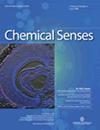COVID-19 导致的嗅觉功能障碍患者的嗅觉感知指纹
IF 1.9
4区 心理学
Q1 BEHAVIORAL SCIENCES
引用次数: 0
摘要
嗅觉是基于对分子的感官检测,然后对其进行进一步的感知解释。嗅觉感知的一种可能的测量方法是 Snitz 等人定义的独立于气味的嗅觉感知指纹 (OPF)。我们的研究包括 99 名健康对照者和 41 名患者。他们使用 "令人愉快的"、"强烈的"、"熟悉的"、"温暖的"、"冰冷的"、"刺激的"、"可食用的 "和 "恶心的 "这八个描述词对十种气味进行评分。无监督机器学习方法--分层聚类分析显示,OPF 可以区分患者和对照组,准确率为 83%,灵敏度为 51%,特异性为 96%。此外,一种有监督的机器学习方法--随机森林分类器显示,OPF 可以区分测试数据集中的患者和对照组,准确率为 86%,灵敏度为 64%,特异性为 96%。主成分分析和随机森林分类器显示,熟悉度和强度是解释数据差异的关键特征。总之,COVID 相关嗅觉功能障碍患者的嗅觉感知与常人有本质区别。本文章由计算机程序翻译,如有差异,请以英文原文为准。
An olfactory perceptual fingerprint in people with olfactory dysfunction due to COVID-19
The sense of smell is based on sensory detection of the molecule(s), which is then further perceptually interpreted. A possible measure of olfactory perception is an odor independent olfactory perceptual fingerprint (OPF) defined by Snitz et al. We aimed to investigate, whether OPF can distinguish patients with olfactory dysfunction due to COVID-19 from controls and which perceptual descriptors are important for that separation. Our study included 99 healthy controls and 41 patients. They rated ten odors using eight descriptors 'pleasant', 'intense', 'familiar', 'warm', 'cold', 'irritating', ‘edible', and ‘disgusting'. An unsupervised machine learning method, hierarchical cluster analysis, showed that OPF can distinguish patients from controls with accuracy of 83%, sensitivity of 51%, and specificity of 96%. Furthermore, a supervised machine learning method, random forest classifier, showed that OPF can distinguish patients and controls in the testing dataset with accuracy of 86%, sensitivity of 64%, and specificity of 96%. Principal component analysis and random forest classifier showed that familiarity and intensity were the key qualities to explain the variance of the data. In conclusion, people with COVID-related olfactory dysfunction have a fundamentally different olfactory perception.
求助全文
通过发布文献求助,成功后即可免费获取论文全文。
去求助
来源期刊

Chemical Senses
医学-行为科学
CiteScore
8.60
自引率
2.90%
发文量
25
审稿时长
1 months
期刊介绍:
Chemical Senses publishes original research and review papers on all aspects of chemoreception in both humans and animals. An important part of the journal''s coverage is devoted to techniques and the development and application of new methods for investigating chemoreception and chemosensory structures.
 求助内容:
求助内容: 应助结果提醒方式:
应助结果提醒方式:


